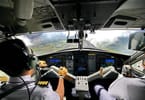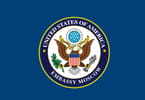Many years ago, Cunard Line ads promoted its transatlantic crossings with the tag line “Getting there is half the fun.” That may still be true of crossing the ocean by ship, but it hardly applies to airline travel these days. Indeed, by many measures, air travel is more of a hassle than ever.
Let’s review some of the major headaches that commercial air travel provokes nowadays, with some suggestions on how to minimize the pain.
Most of the trouble with air travel stems from one simple equation: More people are flying, but the number of flights operated by major airlines has been cut significantly due to financial reasons. More people are being crammed onto each plane, and there are fewer empty seats than ever. At the same time, often to cut costs as part of a bankruptcy reorganization plan – many airlines fewer employees at the airport to help you, fewer handlers to move your bags quickly to the carousel, more overworked flight attendants in the planes, and so on.
And as the passenger numbers keep growing, the Transportation Security Administration keeps developing new, more complicated rules to follow if you want to get through the airport security check in a timely manner.
Put all this together, and the cruise passenger who must fly to his ship’s departure port needs to take a huge supply of patience to the airport and onto the plane. Still, some pre-planning can go a long way to alleviate the hassles.
Crowded Planes
Back in the days of comfortable air travel – i.e., before the industry’s deregulation in the late 1970s – major airlines were happy with planes that were around 60 percent full. That was about the percentage of occupied seats they needed to turn a profit on any given flight; and for passengers, it meant a leisurely experience at the airport and most likely an empty seat next to them on the plane. As recently as 2001, the U.S. airline industry’s average “load factor” (percentage of seats occupied) was still just 70 percent.
How times have changed. During 2006, according to the federal government’s Bureau of Transportation Statistics, the average load factor was just under 80 percent, although it has recently fallen due to a weaker economy. Still, on a typical flight, four of every five seats will be occupied; and on many popular flights, every seat will be full.
The major airlines have been cutting back on the number of flights they operate in the past few years – even though passenger demand for air travel has been rising, and especially since the economic crisis hit in September 2008. Why? To improve their bottom lines. Fewer flights with more passengers translate to lower operating costs and greater revenues per departure. From 2005 to 2006, the number of domestic and international passengers on scheduled U.S. airlines increased by almost six million, to 744 million. But the number of flights operated dropped by almost three percent. The result: packed planes.
Back in 2006 the number of flights’ on-time arrivals fell to their worst levels since before 9/11. And the number of checked bags that got lost or misdirected reached the highest level in 16 years. During the first quarter of 2007, more than a quarter of all flights arrived more than 15 minutes late (vs. 20 percent in 2004), and more than three percent were canceled (vs. two percent in 2004). 2008 improved on time performance by 1%, 76% of all domestic flights arrived or departed on time – 24% did not.
It must be noted that baggage handling by the airlines has improved since most airline now charge a service fee of $15 to $25 per bag for checked luggage. Naturally, fewer bags are being checked. This has slowed down security lines, however, as more people opt to carry their luggage onboard. This has also slowed down the boarding process.
Strategies
What can you do? For starters, book your flights as far in advance as you can. That way, you’ll find the greatest availability of flight options – and the lowest fares. You’ll also have a better chance of getting a seat assignment at the time you buy your tickets, instead of having to wait until you get to the airport. Remember, airlines will only make a certain percentage of seats on any given flight available for advance assignment at the time of purchase; the rest will be assigned the day of departure. They do this because airlines routinely take more reservations than there are seats on the plane – anticipating that some travelers won’t show up for the flight they booked — and they don’t want to assign more seats than the aircraft has.
If you can’t get an advance seat assignment, check in online and print out your boarding pass. Get to the airport early if you have to check in there. Because airlines routinely overbook, the sooner you get that boarding pass in your hand, the better. If you check in for your flight from your home computer and print out your boarding pass you can just check your bags with a skycap at the airport and go right to the security checkpoint.
When planning your itinerary, keep in mind that as a general rule, the earlier in the day your flight departs, the lower the odds that you will face delays or cancellations. Avoid booking flights late in the day – especially the last flight of the day. Also, try to book a non-stop flight if you can, even if it means driving to a more distant airport. The more stops or connections you have in your flight itinerary, the greater the chance something can go awry along the way – a missed connection, a delay, a lost bag.
In any case, it’s always a good idea to book a flight to your ship’s departure port at least a day before sailing. This is especially true if you’re going on a European or other overseas cruise. Not only will it give you time to relax, unwind and perhaps adjust to a new time zone, but it could be critical if your checked bag is misdirected by the airline. Why? Because the vast majority of “lost” bags are found and returned to their owners by the airline within 24 hours. They can return it to you right away if you’re still in port, but not if you’re at sea. During the first quarter of 2007, the airlines “misdirected” 7.7 checked bags per 1,000 passengers, or roughly one bag per flight. That’s a 29 percent increase over the same period a year earlier.
Here’s another tip: If you drive yourself to the airport, you can no longer assume that the airport’s public parking garages or even its remote lots will have space available, since so many people are flying these days. The last thing you need is to be driving around and around a parking garage looking for a space as your flight time draws near. Consider using a private, off-airport parking facility instead. You can book a space in advance (do a Google search for facilities near your local airport), they’ll have regular shuttle transfers to and from the terminals, and they’re generally a lot cheaper than parking in the airport lots.
Security Hassles
That brings us to the perennial headache of airport security. Are any of you old enough to remember the days when there was no airport security – when you could just walk from the check-in counter at your leisure down to the departure gate, with no intervening barriers, metal detectors, body searches or x-ray scanners? That all changed forever with the hijackings of the 1970s, when airports nationwide deployed the first generation of pre-flight security.
In the wake of 9/11, airport security is a huge and burgeoning industry, with its own federal agency, ever-more-sophisticated technology and a large workforce of (supposedly) skilled government employees. But the rules for what passengers must do and cannot do keep changing, so let the flyer beware. It’s imperative that you know the current security regulations lest you be repeatedly scanned and body-searched, have some of your personal items confiscated, and possibly – if you dare to complain or argue – have yourself detained by the cops and get your name onto a secret government database.
Because security checks are mandatory, allow extra time before your flight to get through the checkpoint. You can never know for sure how long the security lines will be on the day you depart. Always keep in mind what kind of large events may be happening in a given city (the Superbowl, World Series, etc.) and also check the weather for any city where you might have to change flights.
And when you pack your bags, keep in mind that all checked luggage is now subject to scanning and/or hand searches by TSA staffers. As a result, you should not lock your checked luggage unless you use a TSA-approved lock that the security officers can open (but no one else can). To locate suppliers of these locks, just do a quick Google search for “TSA approved luggage locks.” If you do lock a bag and it is singled out for a hand search, your lock will be cut off. And by the way, having one of the locks is no guarantee that they will not cut the lock off anyway if they can’t find their key.
Liquids and gels
If you have flown since 2006 you are aware we are now prohibited from carrying almost any liquid, gel or aerosol onto an aircraft unless it is in a small (three fluid ounces or less) bottle. Any such small bottles or containers must be placed inside a zip-top, one-quart plastic bag. There’s a limit of one plastic bag per passenger, and you’ll have to take it out of your carry-on bag and send it through the x-ray machine separately. (For details of the policy, go to the Transportation Security Administration web site at www.tsa.gov/311/index.shtm.)
This “liquids” regulations came about when cops in the U.K. uncovered a terrorist plot to create explosives on aircraft by bringing the separate, innocuous (and mostly liquid) components aboard independently, then combining them once the plane was in the air. That plot led to bans worldwide against carrying any significant amounts of liquids on board; the regulations are very similar in other countries. (In fact, the liquids rule is a major reason why the lost-baggage rate has gone up. After the rule took effect, the number of bags that passengers checked instead of carrying on increased by about 20 percent, straining the capacity of airline baggage systems and workers.)
The exception: Once you clear security at the airport, you can still buy a coffee or a bottle of water in a terminal store and carry it on. But if you’re one of those cruisers who likes to stock up on duty-free liquor in St. Thomas and lug the boxes of booze onto your return flight, forget it. It will have to be shipped, or stowed in your checked luggage. Besides, nowadays the airlines only let you carry on one piece of hand luggage and one “personal item” like a purse, briefcase or computer case.
If you’re counting on the rules being relaxed forget about it. Back in May, 2007 a TSA official told a travel conference in Miami that the agency’s liquids rule will remain in effect “for the foreseeable future, at least.” Obviously, nothing has changed with a policy that many passengers consider to be undue over-regulation and not very realistic in terms of actual security.
WHAT TO TAKE AWAY FROM THIS ARTICLE:
- Put all this together, and the cruise passenger who must fly to his ship’s departure port needs to take a huge supply of patience to the airport and onto the plane.
- And as the passenger numbers keep growing, the Transportation Security Administration keeps developing new, more complicated rules to follow if you want to get through the airport security check in a timely manner.
- You’ll also have a better chance of getting a seat assignment at the time you buy your tickets, instead of having to wait until you get to….






















